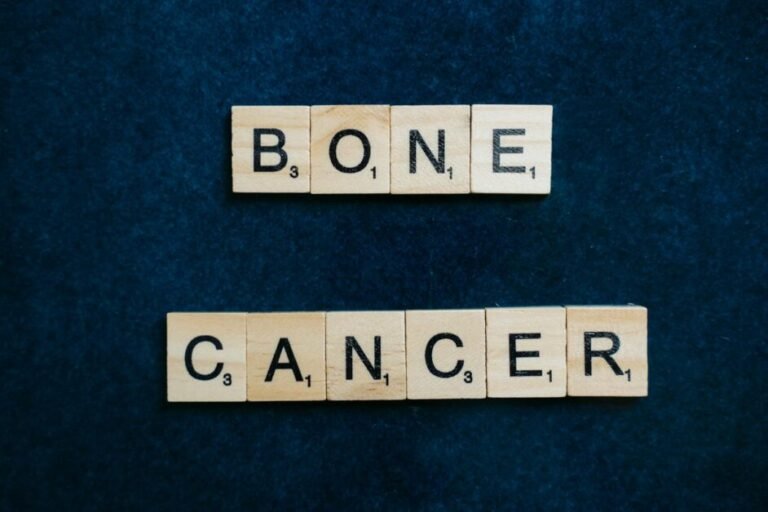Exploring Alternative Pain Management Therapies
So, you’ve been dealing with persistent pain, and traditional pain management techniques haven’t been quite cutting it for you. Well, you’re in luck! In this article, we’ll be taking a closer look at some alternative pain management therapies that have been gaining popularity. From acupuncture to herbal remedies, we’ll explore the effectiveness, benefits, and potential drawbacks of these alternative approaches. Whether you’re curious about trying something new or just looking for more options, keep reading to discover what these alternative therapies have to offer in the realm of pain management.




Alternative Pain Management Therapies: Acupuncture
Acupuncture is an ancient practice that originated in China over 2,000 years ago and has since spread across the world. It involves inserting thin needles into specific points on the body to address various health conditions and restore the balance of energy, or “Qi,” within the body. Acupuncture is based on the principle that the body is connected through meridians, or pathways, and that blockages or imbalances in the flow of energy can lead to pain and illness.During an acupuncture session, a trained practitioner will carefully insert sterilized needles into specific points on your body. These points are determined based on your symptoms and the underlying imbalances being addressed. The needles are typically left in place for 20 to 40 minutes while you relax and allow the treatment to take effect. Some people may experience a mild tingling or dull ache at the insertion sites, but the procedure is generally well-tolerated and painless.Numerous studies have been conducted to explore the effectiveness of acupuncture in treating various conditions. Research has shown that acupuncture can provide relief for chronic pain, migraines, osteoarthritis, and even postoperative nausea and vomiting. The practice is believed to stimulate the release of endorphins, which are the body’s natural painkillers, and to promote the flow of blood and energy throughout the body. However, it is important to note that while acupuncture can be beneficial for many individuals, it may not be effective for everyone, and results can vary.Common conditions that can be treated with acupuncture include back pain, neck pain, joint pain, headaches, and menstrual cramps. Acupuncture is also often used as a complementary therapy for conditions such as fibromyalgia, stress, and anxiety. It is important to consult with a qualified acupuncturist to discuss your specific needs and determine if acupuncture is a suitable treatment option for you.Chiropractic Care
Chiropractic care is a form of alternative medicine that focuses on the diagnosis and treatment of musculoskeletal and nervous system disorders. It is based on the principle that the body has the ability to heal itself and that proper alignment of the spine is crucial for the overall health and well-being of an individual.Chiropractors utilize a variety of techniques, with spinal adjustments being one of the most common. During a spinal adjustment, the chiropractor applies controlled force to specific areas of the spine to improve alignment, alleviate pain, and enhance the body’s natural healing processes. This can involve manual manipulation, as well as the use of specialized instruments to deliver targeted adjustments.In addition to spinal adjustments, chiropractors may also incorporate other therapies into their treatment plans. These can include massage therapy, stretching exercises, nutritional counseling, and lifestyle recommendations. The goal of these additional therapies is to support the body’s healing process and promote overall wellness.Chiropractic care can be beneficial for a wide range of conditions, including back pain, neck pain, headaches, sciatica, and sports injuries. It is commonly used as a conservative approach to pain management and can help individuals avoid or reduce the need for surgery or medication. By addressing the root cause of the problem, chiropractic care aims to provide long-term relief and improved functioning.Massage Therapy
Massage therapy is a practice that involves the manipulation of soft tissues in the body, including muscles, tendons, and ligaments. It has been used for centuries as a means to promote relaxation, reduce pain, and improve overall well-being. There are various types of massage techniques, each with its own focus and benefits.Some common types of massage include Swedish massage, deep tissue massage, and sports massage. Swedish massage is the most popular and involves long, flowing strokes to promote relaxation and circulation. Deep tissue massage targets deeper layers of muscles and connective tissues to relieve chronic pain and tension. Sports massage is specifically designed for athletes and focuses on enhancing performance, preventing injuries, and aiding in recovery.Massage therapy offers numerous benefits for both physical and mental well-being. It can help reduce muscle tension, improve flexibility, and alleviate pain and stiffness. Massage also promotes relaxation, reduces stress, and improves sleep quality. Additionally, it can enhance immune function and stimulate the release of endorphins, which are the body’s natural painkillers.Massage therapists utilize a variety of techniques and applications based on the individual’s needs and preferences. Some techniques may involve gentle stroking and kneading, while others may use deeper pressure to target specific areas of concern. The therapist may also incorporate additional elements such as heat or aromatherapy to enhance the massage experience.Certain specialized forms of massage have emerged to address specific conditions or populations. For example, prenatal massage caters to the needs of expectant mothers, while geriatric massage focuses on the unique needs of older adults. These specialized forms of massage take into account the specific considerations and precautions necessary for each group.When considering massage therapy, it is important to communicate openly with your therapist about any health conditions or concerns you may have. They can customize the treatment to suit your needs and adapt their techniques to ensure your safety and comfort. While massage therapy is generally safe and well-tolerated, it may not be suitable for individuals with certain medical conditions, such as deep vein thrombosis or fractures.Alternative Pain Management Therapies: Herbal Medicine
Herbal medicine, also known as herbalism, is a traditional healing practice that involves the use of plants and plant extracts to treat various health conditions. It has been employed for centuries across different cultures and is based on the belief that plants possess natural healing properties that can support the body’s innate ability to heal.The origins of herbal medicine can be traced back to ancient civilizations, where plants were used as remedies for ailments and diseases. Traditional systems of medicine, such as Traditional Chinese Medicine and Ayurveda, have incorporated herbal remedies as a core component of their practices.Commonly used herbs and ingredients in herbal medicine include ginger, turmeric, ginseng, echinacea, and chamomile, among many others. Each herb has its own unique properties and potential therapeutic benefits. Herbs can be consumed in various forms, including teas, tinctures, capsules, and topical applications.Herbal preparations can be made at home or purchased from reputable sources. It is important to note that while herbs are considered natural, they can still interact with medications and may not be suitable for everyone. It is advisable to consult with a qualified herbalist or healthcare provider before starting any herbal treatment regimen. They can assess your individual needs, consider potential risks and contraindications, and guide you toward safe and effective herbal products.Evidence regarding the efficacy of herbal medicine varies depending on the specific herb and health condition being addressed. Some herbs have been extensively studied and have shown promising results in clinical trials, while others may have limited research supporting their use. It is crucial to rely on evidence-based information and consult with knowledgeable practitioners to make informed decisions about herbal remedies.Safety is an important consideration when using herbal medicine. While herbs are generally considered safe, they can still have side effects and interact with certain medications. It is important to follow dosage instructions carefully and be aware of any potential allergic reactions or adverse effects. If you experience any unexpected symptoms or concerns, it is advisable to seek medical advice.
Meditation and Mindfulness
Meditation and mindfulness are practices that involve focusing one’s attention and awareness on the present moment. They originated in ancient traditions, such as Buddhism and Hinduism, and have since gained popularity in modern society as effective tools for managing stress, improving mental well-being, and reducing pain perception.Meditation encompasses a range of practices, but at its core, it involves training the mind to achieve a state of calmness and clarity. This can be done through various techniques, such as focusing on the breath, repeating a mantra, or visualizing peaceful images. Mindfulness, on the other hand, involves paying attention to the present moment in a non-judgmental and accepting way, without getting caught up in past regrets or future worries.Both meditation and mindfulness have been found to have numerous benefits, including stress reduction, improved focus, increased self-awareness, and enhanced emotional well-being. In terms of pain management, research has shown that meditation and mindfulness can help individuals cope with chronic pain by changing their relationship to pain and reducing its perceived intensity.Practicing meditation and mindfulness can be done in various ways, depending on personal preferences and lifestyle. It can be as simple as finding a quiet space to sit or lie down and focusing on your breath for a few minutes each day. Guided meditation apps, online courses, and in-person classes are also available to provide structure and guidance for beginners.Integration of meditation and mindfulness into clinical settings has been gaining momentum in recent years. Healthcare providers are recognizing the value of these practices in supporting overall well-being and improving patient outcomes. Mindfulness-based stress reduction programs, for example, have been integrated into the treatment of chronic pain, depression, and anxiety, with positive results.It is important to note that meditation and mindfulness require practice and commitment to experience their full benefits. Like any skill, they improve with regular practice over time. It may be helpful to start with short sessions and gradually increase the duration as your practice evolves. It is also important to approach meditation and mindfulness with an open and non-judgmental mindset, allowing yourself to explore the practice and discover what works best for you.Yoga and Tai Chi
Yoga and Tai Chi are ancient practices that promote physical, mental, and spiritual well-being. They involve a combination of movements, postures, and breathing exercises to enhance flexibility, strength, balance, and relaxation. Both practices have gained popularity as effective complementary therapies for pain management.Yoga originated in ancient India and has evolved over thousands of years into various styles and approaches. It encompasses physical postures (asanas), breathing exercises (pranayama), and meditation. Yoga is known for its ability to improve flexibility, build strength and endurance, and promote stress reduction and mindfulness.Tai Chi, on the other hand, originated in ancient China and is characterized by slow, flowing movements and deep breathing. It is often described as a moving meditation and is known for its gentle, low-impact nature. Tai Chi promotes balance, coordination, and relaxation, while also improving muscular strength and flexibility.Both yoga and Tai Chi have been found to have numerous physical and mental benefits. They can help reduce chronic pain, improve mobility and flexibility, alleviate stress, and enhance overall quality of life. Research has shown that both practices can be effective in managing pain associated with conditions such as arthritis, fibromyalgia, and lower back pain.Yoga and Tai Chi can be adapted to suit individuals of all ages and fitness levels. They can be practiced in a group setting, with the guidance of a qualified instructor, or individually at home. Numerous resources, including online videos and classes, are available to support individuals in their practice.Research into the benefits of yoga and Tai Chi in pain management is ongoing. Studies have shown promising results, but more robust research is needed to fully understand the mechanisms and optimize the integration of these practices into healthcare settings. Nevertheless, their gentle and holistic approach makes them appealing options for individuals seeking natural and self-empowering strategies for pain management.
Hypnotherapy
Hypnotherapy is a therapeutic technique that uses hypnosis to facilitate changes in thoughts, feelings, and behaviors. It involves inducing a relaxed and focused state of consciousness, known as trance, to access the subconscious mind and promote positive changes. Hypnotherapy can be used for a range of purposes, including pain management.Hypnosis is a natural state that we all experience daily, such as when we are deeply engrossed in a book or lost in thought. During a hypnotherapy session, a trained hypnotherapist will guide you into a state of relaxation and suggest positive changes or coping strategies related to your pain. It is important to note that hypnosis cannot make you do anything against your will or reveal personal information you are not comfortable sharing.The process of hypnotherapy typically involves an initial consultation to discuss your goals and concerns, followed by a series of sessions tailored to your specific needs. The therapist may use various techniques, such as guided imagery, suggestion therapy, or regression, to address underlying issues and promote pain relief. The number of sessions required can vary depending on the individual and the complexity of the condition being addressed.Hypnosis has been found to be particularly effective in managing chronic pain by altering pain perception and promoting relaxation. It can help individuals develop coping mechanisms, reduce stress and anxiety, and enhance their overall quality of life. Hypnotherapy can be used alongside other conventional or complementary treatments to optimize pain management outcomes.Scientific research has shown positive results in the use of hypnotherapy for various pain conditions, including chronic headaches, fibromyalgia, and irritable bowel syndrome. However, more research is needed to fully understand its underlying mechanisms and optimize its application. Hypnotherapy is considered safe when performed by a trained professional, but it may not be suitable for everyone, such as individuals with certain psychological conditions.It is essential to seek out a qualified and reputable hypnotherapist when considering hypnotherapy for pain management. A trained professional can guide you through the process and ensure that the therapy is tailored to your specific needs. They can also address any concerns or questions you may have, providing a supportive and safe environment for your healing journey.Alternative Pain Management Therapies: Essential Oils
Essential oils are highly concentrated plant extracts that capture the natural aromatic and therapeutic properties of plants. They have been used for centuries in various cultures for their healing properties and are commonly employed as a complementary therapy for pain management.Essential oils are extracted from different parts of plants, including leaves, flowers, stems, and roots. Each essential oil has its own unique fragrance and potential health benefits. Common essential oils used for pain relief include lavender, peppermint, eucalyptus, tea tree, and chamomile, among others.Essential oils can be used in different ways, depending on the desired effect and individual preferences. They can be inhaled through aromatherapy using diffusers, applied topically through massage or diluted in carrier oils, or added to bath water for a soothing soak. When using essential oils topically, it is important to dilute them properly to prevent skin irritation. Some oils can also be ingested orally, but this should only be done under the guidance of a qualified aromatherapist or healthcare professional.The benefits of essential oils in pain management are thought to be due to their analgesic, anti-inflammatory, and relaxant properties. They can help alleviate pain, reduce inflammation, and promote relaxation and stress reduction. However, it is important to note that while essential oils can offer relief for some individuals, results can vary, and they may not be effective for everyone.When considering the use of essential oils, it is crucial to choose high-quality oils from reputable sources. Synthetic or adulterated oils may not provide the same therapeutic benefits and can even cause adverse reactions. It is recommended to consult with a qualified aromatherapist or healthcare provider to determine the most appropriate oils and methods of use for your specific needs.Certain precautions should be taken when using essential oils, particularly for individuals with sensitive skin, allergies, or respiratory conditions. Some oils may cause skin irritation or interact with certain medications. It is advisable to perform a patch test before using a new essential oil topically and to start with low concentrations to assess individual tolerance.Overall, the use of essential oils in pain management can provide a natural and soothing approach to support overall well-being. They can be used as part of a holistic treatment plan, along with other complementary therapies and conventional medical care, to optimize pain relief and improve quality of life.






